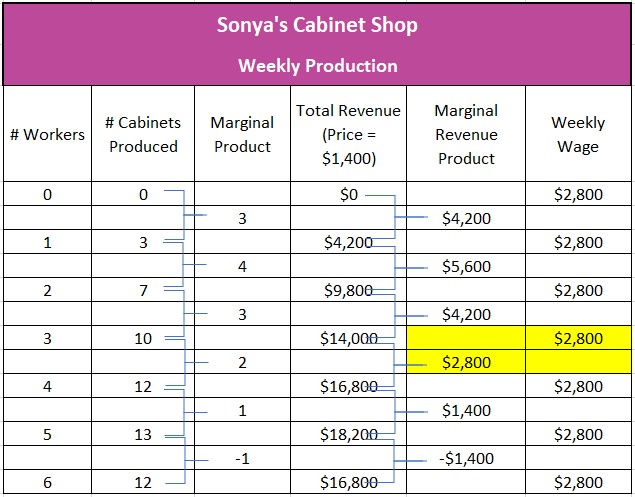Labor is the human activity employed in the production of goods and services. Labor includes manual and mental work.
Labor is one of four factors of production. Businesses purchase labor in the labor market, which is part of the factor market. Like all factors of production, a company’s demand for labor is derived from the demand for the goods or services it sells in the goods and services market. The price of labor, or wages, is determined by the law of supply and demand.
During economic expansions, the demand for labor increases, and wages generally increase. However, technology, available capital, and globalization can also influence a company’s demand for labor. In 2019, the unemployment rate dipped to record lows, but wages barely kept pace with inflation. Technological improvements increased productivity and replaced many workers.
The supply of available workers influences wages. Immigration increases the labor supply. So does globalization because outsourcing enables companies to move production to countries with a lower production cost.
In most cases, the labor market is local. For example, a grocery store hires most of its workers locally. However, when skills are unavailable locally, a company may recruit nationally or even internationally. For example, a hospital may recruit doctors with a needed specialty. Sports teams may seek the best international players. Highly specialized skills that are in great demand may require a high wage.
Labor is usually a variable cost, meaning that it is easily adjusted to meet a company’s needs. Companies will continue to hire until the marginal revenue product of the added worker equals the wage. Suppose Sonya just opened a small cabinet shop. Initially, she works by herself and builds three cabinets in a week. Spending time meeting customers and completing administrative tasks constrains her construction time. She decides to hire additional workers who can specialize in construction. How many workers should Sonya hire? Sonya can answer this question by completing the table below. Assume her cabinets sell for $1,400, and she pays her workers $2,800 weekly.
Sonya believes another employee would increase production from three cabinets to seven cabinets. Her marginal product, or the increase in production, would equal four. Since her cabinets retail for $1.400, her first hire (second employee including her) would increase her revenues by $5,600 (4 x $1,400), as seen in the marginal revenue product column. Her third employee would generate $4,200 in added income. Additional revenue would continue to be generated until the fifth worker when Sonya’s marginal revenue product would equal $1,400. Since the fifth worker produces less revenue than her wage, Sonya would be ill-advised to hire her.

Notice that Sonya’s marginal revenue product determines her demand for labor. In fact, the marginal revenue product curve is a company’s demand curve for labor because it tells a company’s management how much labor it should employ at a given wage.
Marginal Analysis – How Decisions Are Made
Output and Profit Maximization
Capital and Consumer Goods – How They Influence Productivity
Factors of Production – The Required Inputs of Every Business